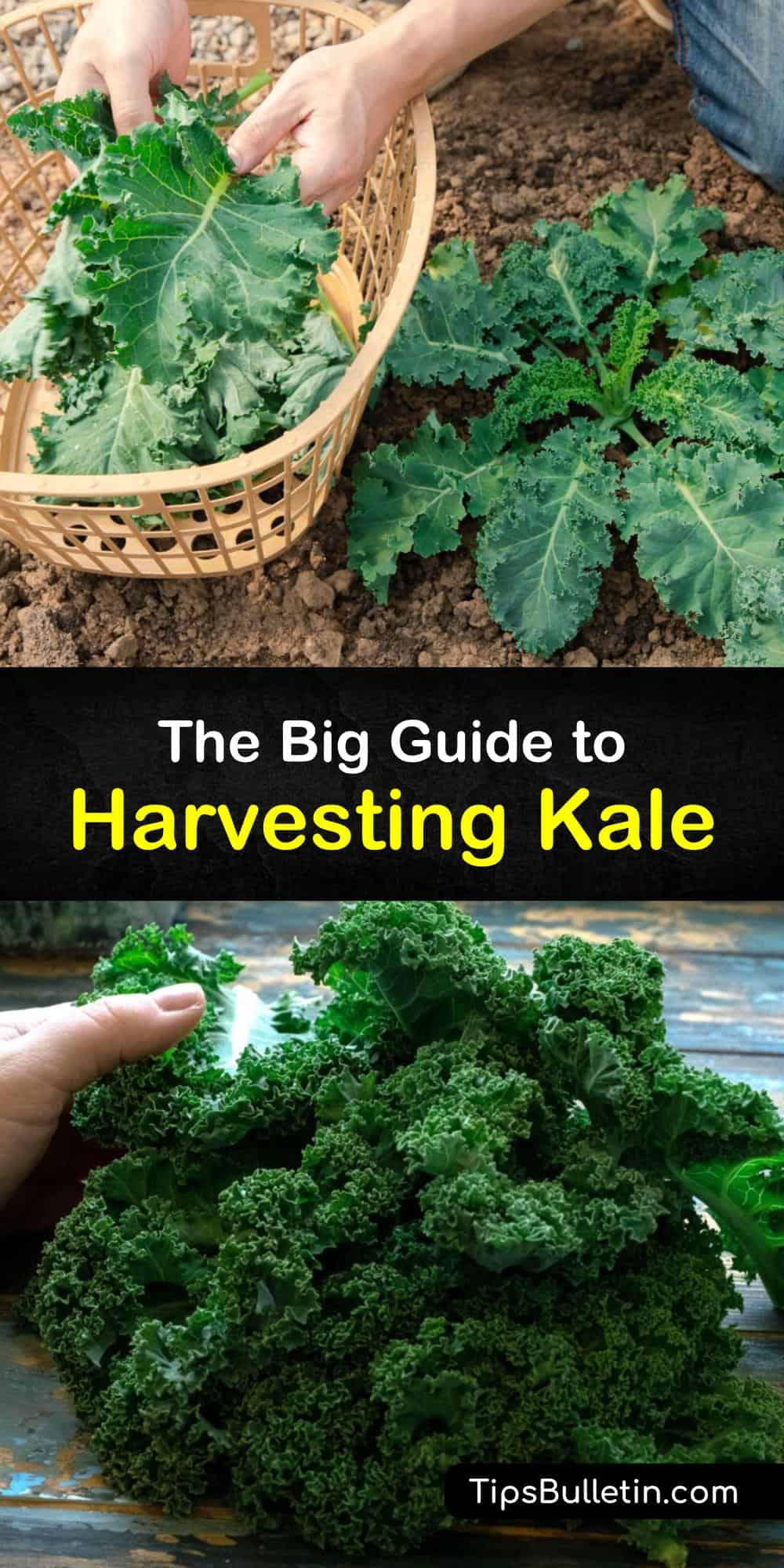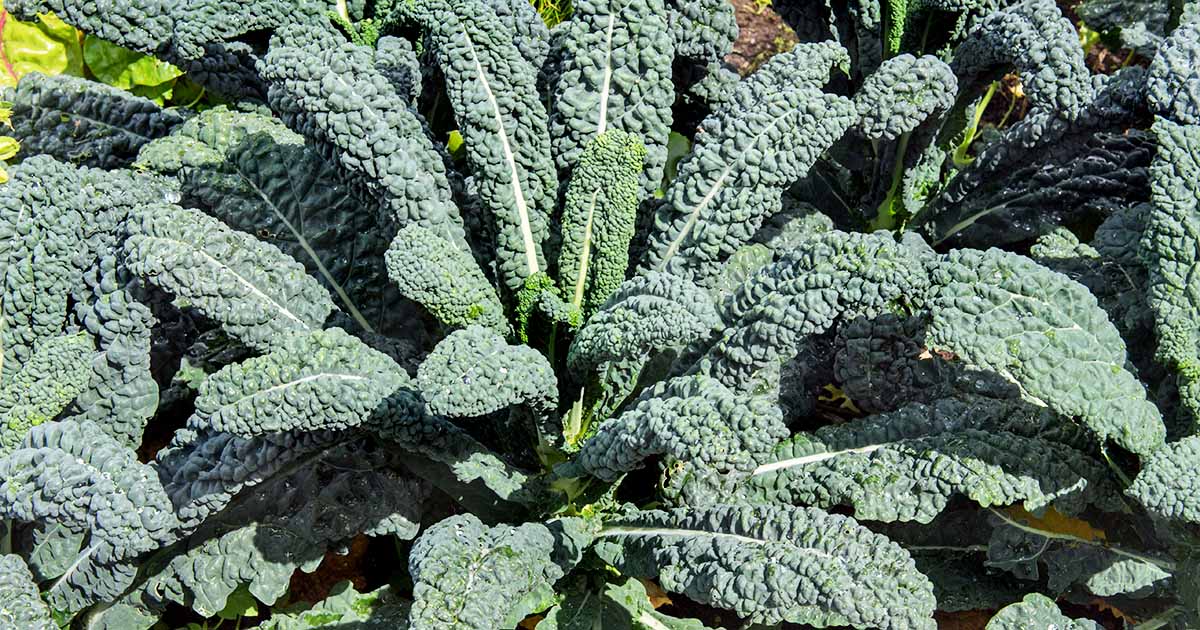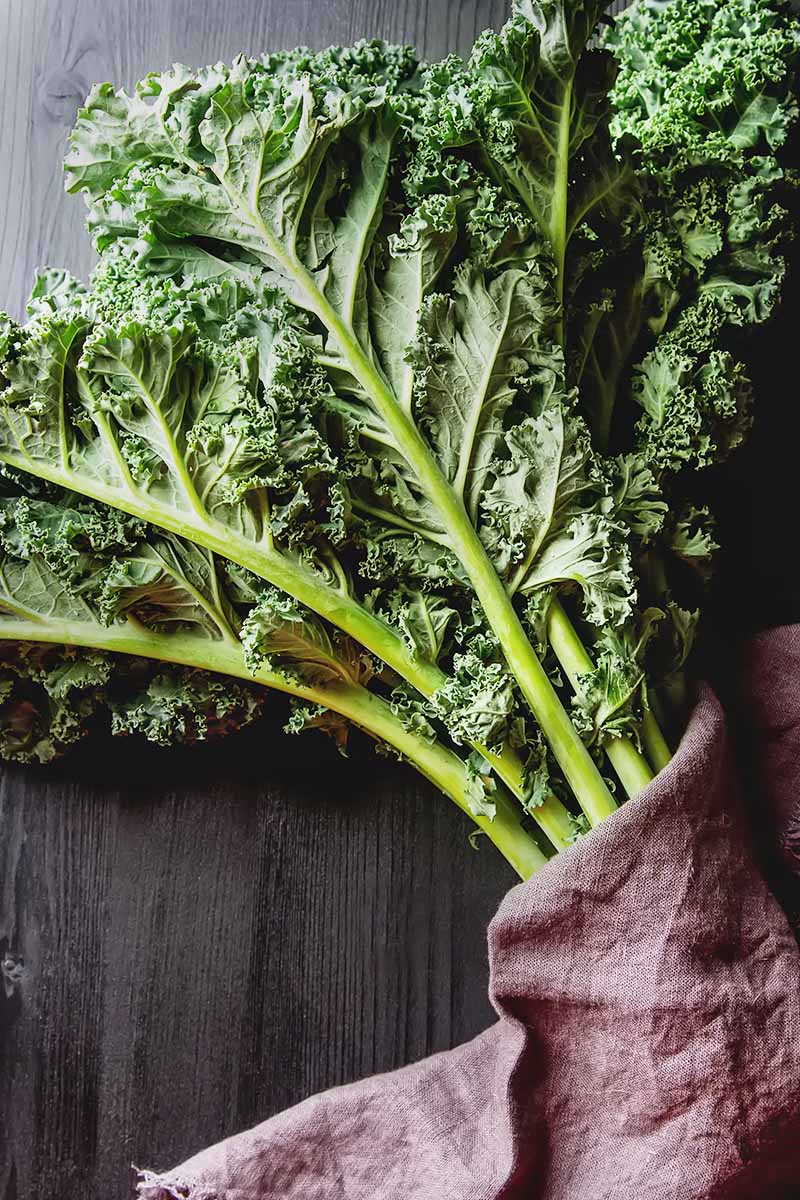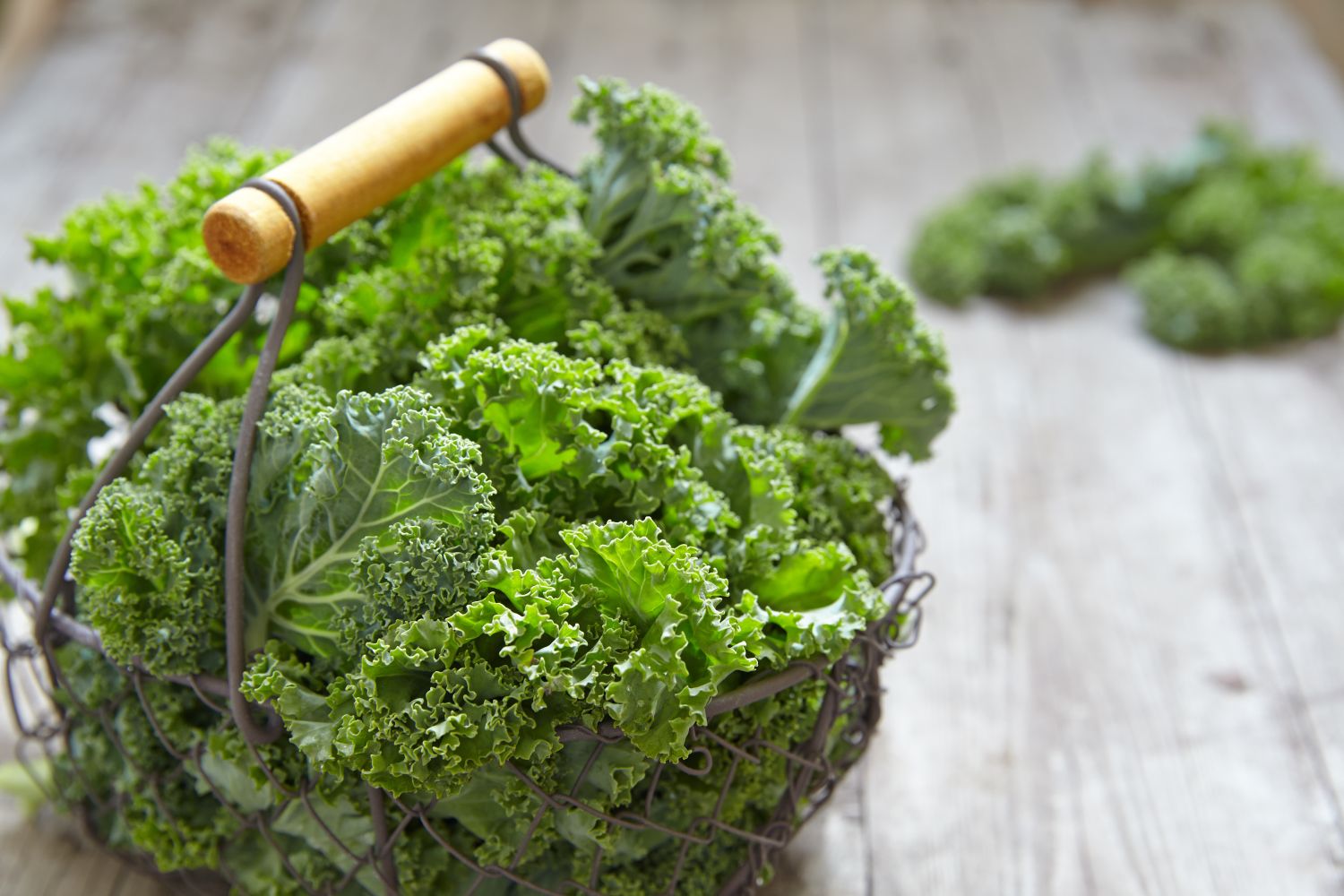Understanding Kale’s Growth Cycle
Kale, a cool-season crop, undergoes several stages of growth before it is ready to be harvested. Understanding these stages is crucial for determining the best time to harvest kale, as it directly affects the plant’s flavor, texture, and nutritional content. The growth cycle of kale can be divided into three main stages: germination, seedling, and maturity.
Germination, the first stage, typically occurs within 7-10 days after sowing the seeds. During this stage, the seeds sprout, and the seedlings develop their first set of leaves. The seedling stage, which lasts around 1-2 weeks, is characterized by the development of the plant’s root system and the growth of its second set of leaves. As the plant matures, it enters the final stage, where it produces a large, leafy canopy and reaches its full height.
Knowing when to harvest kale is critical, as it can make a significant difference in the plant’s quality and nutritional value. Harvesting kale too early can result in a less flavorful and less nutritious product, while harvesting it too late can lead to a bitter taste and a tough texture. By understanding the growth cycle of kale, gardeners and farmers can determine the optimal time to harvest their crop, ensuring the best possible flavor, texture, and nutritional content.
When it comes to knowing how and when to harvest kale, it is essential to monitor the plant’s growth and development closely. Regular inspections of the plants will help gardeners and farmers identify the optimal time to harvest, ensuring the best possible results. By combining this knowledge with proper harvesting techniques, individuals can enjoy a bountiful and delicious kale crop.
How to Identify Ready-to-Harvest Kale
Identifying when kale is ready to be harvested is crucial for optimal flavor, texture, and nutritional content. To determine if kale is ready to be harvested, inspect the plants for visual cues and physical characteristics. One of the primary indicators of readiness is leaf size. Kale leaves are typically ready to be harvested when they reach 2-3 inches in length and have a deep green color.
Another way to determine if kale is ready to be harvested is to check the texture of the leaves. Ready-to-harvest kale leaves should be slightly tender and have a bit of crunch to them. Avoid harvesting kale that is too old, as it can become tough and fibrous. Additionally, check the color of the leaves, as some varieties of kale will develop a reddish or purplish tint when they are ready to be harvested.
When inspecting the plants, also check for any signs of bolting, which can indicate that the kale is past its prime. Bolting occurs when the plant begins to produce a flower stalk, which can cause the leaves to become bitter and less palatable. To avoid this, harvest kale regularly to encourage the plant to produce new growth.
Understanding how and when to harvest kale is essential for maximizing the quality and nutritional content of the crop. By inspecting the plants regularly and harvesting at the optimal time, gardeners and farmers can enjoy a bountiful and delicious kale crop. Regular harvesting also encourages the plant to produce new growth, allowing for continuous production throughout the growing season.
In addition to inspecting the plants for visual cues and physical characteristics, it’s also essential to consider the specific variety of kale being grown. Different varieties of kale have unique characteristics and requirements, so it’s crucial to research the specific needs of the variety being grown to ensure optimal harvesting.
The Best Time of Day to Harvest Kale
When it comes to harvesting kale, timing is everything. Not only is it essential to harvest kale at the right stage of growth, but it’s also crucial to consider the time of day. The optimal time to harvest kale is in the morning, after the dew has dried but before the heat of the day. This allows for the best flavor, texture, and nutritional content.
Harvesting kale in the morning has several benefits. For one, the leaves are typically at their crispest and most flavorful during this time. Additionally, the morning harvest helps to minimize the risk of bolting, which can occur when the plant is exposed to high temperatures. Bolting can cause the leaves to become bitter and less palatable, making them less desirable for consumption.
In contrast, harvesting kale in the afternoon or evening can result in a less desirable product. The heat of the day can cause the leaves to become wilted and less flavorful, while the evening harvest can result in a higher risk of bolting. Furthermore, harvesting kale in the evening can also make it more susceptible to pests and diseases, which can negatively impact the plant’s overall health.
Understanding how and when to harvest kale is essential for maximizing the quality and nutritional content of the crop. By harvesting kale at the optimal time of day, gardeners and farmers can enjoy a bountiful and delicious kale crop. Regular harvesting also encourages the plant to produce new growth, allowing for continuous production throughout the growing season.
In addition to considering the time of day, it’s also essential to consider the weather conditions when harvesting kale. Avoid harvesting kale during periods of extreme weather, such as heavy rain or intense heat, as this can negatively impact the plant’s overall health and quality.
Harvesting Methods for Different Kale Varieties
When it comes to harvesting kale, different varieties require different techniques to minimize damage and maximize yield. Curly-leaf kale, for example, is typically harvested by cutting off the entire plant at the base of the stem, just above the soil line. This allows for the entire plant to be harvested at once, making it a convenient option for gardeners and farmers.
Lacinato kale, on the other hand, is typically harvested by removing individual leaves from the plant. This method allows for a more selective harvest, as only the largest and most mature leaves are removed, leaving the smaller leaves to continue growing. This approach also helps to encourage the plant to produce new growth, allowing for continuous production throughout the growing season.
Russian kale, a type of kale that is known for its flat, broad leaves, is typically harvested by cutting off the entire plant at the base of the stem, similar to curly-leaf kale. However, Russian kale can also be harvested by removing individual leaves, similar to lacinato kale. This allows for a more flexible harvest approach, depending on the specific needs of the gardener or farmer.
Understanding the different harvesting methods for various kale varieties is essential for maximizing yield and minimizing damage. By using the correct harvesting technique for each variety, gardeners and farmers can enjoy a bountiful and delicious kale crop. Regular harvesting also encourages the plant to produce new growth, allowing for continuous production throughout the growing season.
In addition to using the correct harvesting technique, it’s also essential to consider the timing of the harvest. Harvesting kale at the optimal time of day, as discussed earlier, can help to minimize damage and maximize yield. Additionally, harvesting kale during the cooler months of the year can help to reduce the risk of bolting, which can negatively impact the plant’s flavor and nutritional content.
How to Harvest Kale for Continuous Production
Harvesting kale in a way that encourages continuous production is essential for maximizing yields and extending the harvest season. One technique for achieving this is to pinch off the flower buds as they form. This will prevent the plant from going to seed and encourage it to continue producing new leaves.
Another technique for harvesting kale for continuous production is to harvest individual leaves rather than cutting off the entire plant. This approach allows for a more selective harvest, as only the largest and most mature leaves are removed, leaving the smaller leaves to continue growing. This method also helps to encourage the plant to produce new growth, allowing for continuous production throughout the growing season.
When harvesting individual leaves, it’s essential to use a sharp knife or pruning tool to avoid damaging the plant. Cut the leaves off at the base of the stem, just above the soil line, to encourage new growth. This approach can be used for a variety of kale varieties, including curly-leaf, lacinato, and Russian kale.
Harvesting kale for continuous production has several benefits, including increased yields and extended harvest seasons. By using these techniques, gardeners and farmers can enjoy a bountiful and delicious kale crop for a longer period. Additionally, continuous production can help to reduce the risk of bolting, which can negatively impact the plant’s flavor and nutritional content.
In addition to pinching off flower buds and harvesting individual leaves, there are other techniques for encouraging continuous production in kale. For example, some gardeners and farmers use a technique called “cut-and-come-again” harvesting, where the entire plant is cut off at the base of the stem, and then allowed to regrow. This approach can be used for a variety of kale varieties and can help to encourage continuous production throughout the growing season.
Common Mistakes to Avoid When Harvesting Kale
When it comes to harvesting kale, there are several common mistakes to avoid in order to ensure the best flavor, texture, and nutritional content. One of the most common mistakes is harvesting kale too early or too late. Harvesting kale too early can result in a less flavorful and less nutritious product, while harvesting it too late can lead to a bitter taste and a tough texture.
Another mistake to avoid is harvesting kale during the hottest part of the day. This can cause the leaves to become wilted and less flavorful, and can also lead to a higher risk of bolting. Instead, harvest kale during the cooler parts of the day, such as early morning or late afternoon.
Additionally, it’s essential to avoid harvesting kale during periods of extreme weather, such as heavy rain or intense heat. This can cause the plant to become stressed, leading to a decrease in flavor and nutritional content.
When harvesting kale, it’s also important to avoid damaging the plant. Use a sharp knife or pruning tool to cut the leaves off at the base of the stem, just above the soil line. This will help to prevent damage to the plant and encourage new growth.
Finally, it’s essential to avoid harvesting kale too frequently. This can cause the plant to become stressed, leading to a decrease in flavor and nutritional content. Instead, harvest kale regularly, but allow the plant time to recover between harvests.
By avoiding these common mistakes, gardeners and farmers can ensure the best flavor, texture, and nutritional content from their kale crop. Regular harvesting and proper care can also help to encourage continuous production and extend the harvest season.
Post-Harvest Care for Kale Plants
After harvesting kale, it’s essential to provide proper care for the plants to ensure their continued health and productivity. One of the most critical aspects of post-harvest care is handling the plants gently to avoid damaging them. This includes avoiding excessive handling, which can cause bruising and damage to the leaves.
Another important aspect of post-harvest care is storing the harvested kale properly. Kale should be stored in a cool, dry place, away from direct sunlight and heat. This will help to preserve the flavor and nutritional content of the kale. It’s also essential to store kale in a way that allows for good air circulation, as this will help to prevent moisture from building up and causing spoilage.
In addition to proper storage, it’s also essential to maintain the health of the kale plants after harvesting. This includes providing adequate water and nutrients, as well as controlling pests and diseases. Regularly inspecting the plants for signs of stress or disease can help to identify any potential issues before they become major problems.
By providing proper post-harvest care for kale plants, gardeners and farmers can help to ensure the continued health and productivity of their crop. This can lead to increased yields and better flavor and nutritional content, making the kale more desirable for consumption.
Furthermore, proper post-harvest care can also help to extend the harvest season for kale. By maintaining the health of the plants and providing optimal growing conditions, gardeners and farmers can encourage the plants to continue producing new leaves, allowing for a longer harvest season.
Tips for Preserving and Storing Harvested Kale
Preserving and storing harvested kale is an excellent way to enjoy this nutritious vegetable throughout the year. One of the most popular methods for preserving kale is freezing. To freeze kale, simply chop the leaves into small pieces, blanch them in boiling water for 2-3 minutes, and then package them in airtight containers or freezer bags.
Another method for preserving kale is dehydrating. Dehydrating kale removes the water content, making it lightweight and easy to store. To dehydrate kale, simply chop the leaves into small pieces and place them in a dehydrator or oven on the lowest heat setting. Once the kale is dry and crumbly, store it in airtight containers.
Fermenting is another method for preserving kale. Fermenting kale creates a tangy, sour flavor and can be used in a variety of dishes, such as sauerkraut and kimchi. To ferment kale, simply chop the leaves into small pieces and place them in a jar with a brine solution. Allow the kale to ferment for several days or weeks, depending on the desired level of sourness.
Preserving and storing harvested kale has several benefits. For one, it allows for a longer shelf life, making it possible to enjoy kale throughout the year. Additionally, preserving kale helps to retain its nutritional content, making it a healthy addition to a variety of dishes.
When it comes to storing harvested kale, it’s essential to keep it in a cool, dry place. Kale can be stored in the refrigerator for up to a week, or frozen for several months. Dehydrated kale can be stored for up to a year, while fermented kale can be stored for several months.







